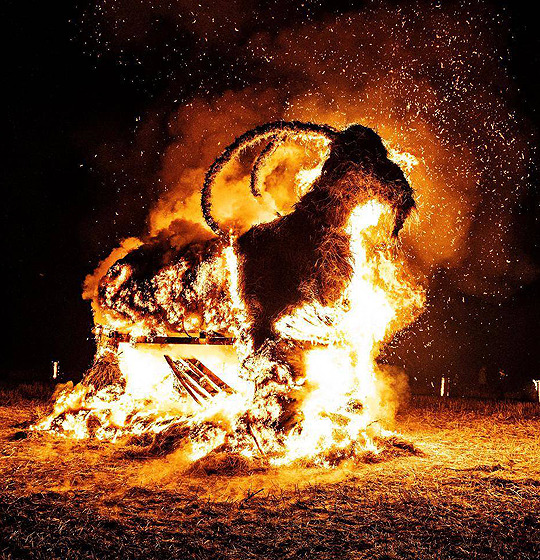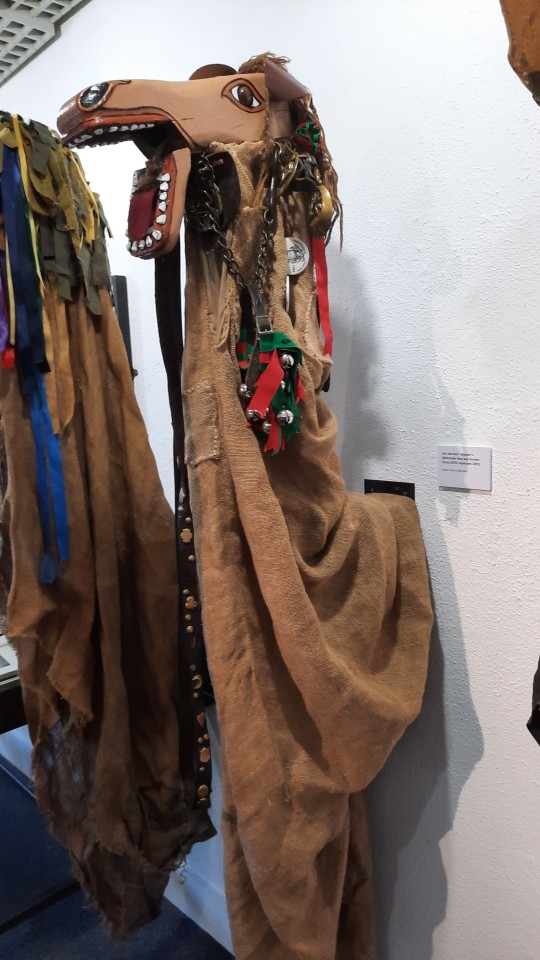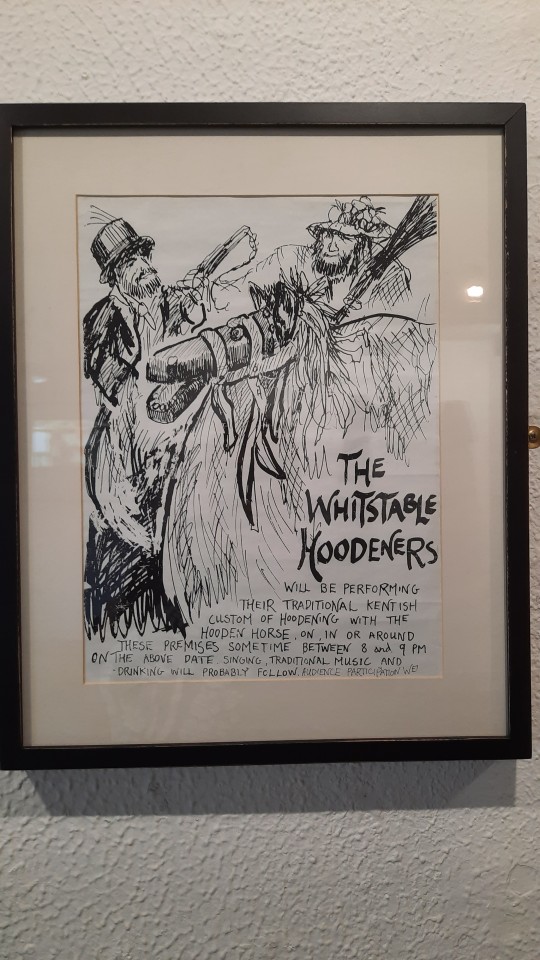#folk traditions
Text


Kekri is an ancient Finnish and Karelian celebration at the end of the harvest season and the cycle of the year. Today, it is celebrated in some places by the burning of the giant, so-called Kekri goat (Kekripukki).
621 notes
·
View notes
Text
Okay something I wish people understood more is that folk religion and folklore is never static. It varies by region by year by storyteller. There is no Single True Canon in an oral folk tradition. Ancient Greek Religion for example was not one set thing, there is no one set version of “Greek Mythology” or Hellenic folk traditions that is correct. There are different cults that were worshipped in different regions and whose traditions changed over time, some of which had membership that was often mostly a political thing (i.e. most prominent political figures in Greece and Rome for several centuries were inducted into the Eleusinian mystery cult which worshipped Demeter and Kore) or just based in which cities worshipped which patron gods. Hesiod’s Theogeny, the Homeric Hymns, the Apollodorus, all of which are written records of tales from “Greek Mythology,” contradict each other in various ways. Most Greek and Roman plays and epics were written more in response to contemporary political situations than any adherence to a specific legend.
There is no single set canon to other folk traditions either. The body of Arthurian canon is also contradictory and was written by a variety of people across several cultures often shaped by individual political lenses.
This is Also true of the modern US equivalent of written folk tales: superhero comics canon. Written by dozens and hundreds of different people across decades responding to different sociopolitical circumstances and publishing priorities, inherently contradictory basically the whole way through.
#tagamemnon#folk traditions#dc comics#arthuriana#also marvel but I try not to care about marvel products any more#caitie speaks#ancient greek religion#hellenism#Caitie talks classics
184 notes
·
View notes
Text

Father or Prince Christmas, carrying the Yule log, illustration from 1848. The personification of Christmas was part of the centuries-old European folkloric tradition of pre-Christian midwinter celebrations, associated with the Slavic god of the Sun and fire, as well as with counterparts in other religions, and with the burning of an oak log or sapling on each hearth to restore strength to the Sun and enter the period of its rise and the lengthening of the day. From 1780: “Here comes I, old Father Christmas, welcome or welcome not, I hope that old Father Christmas will never be forgot…”
#slavic mythology#mythology#classical mythology#folklore#slavic folklore#mythology and folklore#folk traditions#slavic culture#ancient wisdom#slavic mythology net#SlavicMythologyNet#mythical creatures#mythological creatures#mythical beings#mythological creature#fantasy creature#slavic tradition#slavic myths#myths and legends#slavic fantasy#legendary creature
61 notes
·
View notes
Text
Hey Portland area folks, wanna go wassailing?
#wassail#wassailing#sing to the trees#drink cider#folk magic#folk traditions#cider#stone circle cidery
30 notes
·
View notes
Note
Hello! I am just starting my journey on reconnecting with my traditional roots as an Italian practitioner. My great grandparents came from Italy in the mid 1900s, but unfortunately passed before I had the pleasure of asking about their practices. Can I ask a good starting point for someone who is trying to reconnect all on her own?
Hello!
I am so happy that you are wanting to reconnect with your roots! I'm sorry you didn't get the opportunity to ask your grandparents, my deepest condolences for your loss.
In terms of resources, my recommendation for anyone starting out is to go to folklore sources or to read books by authors who don't simply reference other witchcraft authors. I highly recommend reading Italian Folk Magic: Rue's Kitchen Witchery by Mary-Grace Fahrun. It's mostly her personal experience with Italian folk-Catholicism and magic with plenty of anecdotes, recipes, superstitions, and various rituals. I think it's probably the best widely available source out there. She also has a youtube channel! In a similar vein, the website Italian Folk Magic has some great posts about Southern Italian and Sicilian magic.
Other online resources I've found useful are Gail Faith Edwards' writings on Southern Italian healers and folk medicine (it's split into 2 parts–– there's a lot of great information if you're into herbalism/ green witchcraft). I also love this article detailing witchcraft history, superstition, and more throughout Italy. It goes into a lot of detail and has some information about herbal properties and their uses as well.
Here are some festivals and traditions from across Italy tied to folk belief: Focara of Novoli, The Campanacci in Basilicata, The Feast of San Domenico and the Ritual of Serpari of Cocullo, Naca Procession in Southern Italy, Dance of the Devils, Celebration of Santa Lucia, The Feast of Mamma Schiavona––There are many others (mostly Saint feasts) that have pre-Christian roots or have significant rituals attached.
Most information that I have collected comes from anthropological and folklore sources that aren't very accessible. There are some videos available of documentary footage of Italian anthropologist Ernesto de Martino's work detailing folk tradition: here's a clip of La Taranta. This documentary isn't in English, however you can still get a lot out of it even if you don't speak Italian (unfortunately there are no subtitles). The documentarian that worked with de Martino, Luigi Di Gianni gives some of his recollections here. Here is a clip documenting the Feast of Mamma Schiavona. Otherwise, everything else is behind a paywall on sites like jstor, sagepub, and other academic publishers. I would recommend reading anything by anthropologist and folklorist Sabina Magliocco (I have copies of her work), as well as de Martino's Magic: A Theory from the South (which I also have a pdf of). The academic texts can be a little dense and daunting, but they're worth the read.
I have uploaded some of what I have to WeTransfer, but it will only be up for 1 week (until July 10th) so if anyone else would like to download them, you can for a limited time!
#italian folk magic#folk magic#folk traditions#witchcraft#beginner witch#baby witch#witchblr#italian witchcraft#grimoire#book of shadows#streghe#stregoneria#benedicaria#witch tips#long post#witches of tumblr
89 notes
·
View notes
Text

It is the little things in life that makes it special
#tchotchkes#folklore#folk aesthetic#folk art#folk traditions#folk#decor#home decorating#home accessories#trinkets#march#spring#miniature donkey#donkey#horseart#horse#toya's tales#style#toyastales#toyas tales#art#home decor#interior design#candlestick#painting#home improvement#bohemian#rustic#home & lifestyle#homemade
34 notes
·
View notes
Text

Sânziene - the Summer Fairies
Each year, on the 24th of June, Romanians celebrate the pagan holiday of Sanziene. Along with the Fates, Sanzienele are part of the big and charming family of Iele - gracious fairies with magical powers. Unlike the most of Iele, Sanzienele are always good and kind to humans. It is said that on the night before their day, they use to fly over meadows, smelling and touching the wildflowers, enriching them with special healing properties. Sanziene is also the Romanian name of a wild yellow flower, commonly known as the Lady's bedstraw, frequently used in ancient healing potions. So, the 24th of June is the perfect day for collecting this flower, along with other local medicinal plants. Moreover, on Sanziene’s Eve, it is said that they bless the animals and the fountains, strengthen the marriages, heal people of different diseases and then like to dance and sing until dawn
#romania#eastern europe#europe#midsummer#fairies#iele#rurallife#rural aesthetic#rural romania#tradition#folk culture#folklore#romanian folklore#folk traditions#traditional feminine#traditional folk
95 notes
·
View notes
Text
Girl you should not have to work, you should be wildly dancing naked around a huge bonfire, under a full moon with the girlies, celebrating the solstice
#hopepunk#hopecore#solarpunk#peaceful revolution#greenhorizon#anti capitalism#naturecore#feminism#women's community#nature worship#anti fascism#folk traditions
20 notes
·
View notes
Text
Tonantzin Guadalupe 🌵🌹
The original \/u| \//\ goddess I created in 2013 is Maria Rosa. Her design was inspired in major part between the miracle of La Virgen de Guadalupe and the concept of Mary Queen of Heaven.
I was recently commissioned to create a new (\/) Goddess inspired similarly between Guadalupe and Tonantzin by my chingona hermana Janet Bella Rosa who also knew Mi padrino Antonio 🙏 I felt his spirit guiding me to connect our visions! 💞
Tonantzin is an enduring Nahuatl title for the maternal aspect of any Aztec goddess, much like “Our Lady”, rather than the name of a particular goddess. I chose a blue background to parallel Her starry mantle of heaven and also represent Lake Texcoco since the eagle, snake, and cactus from its story of the founding of ancient Mexico there are present. 💙🌵
Tonantzin in various forms is frequently depicted with eagle feet so I thought it appropriate to have the legendary golden eagle clutch the silvery moon below Her in place of Guadalupe’s cherub 🦅 🌙 Tonantzin is often known, by many names, to wear a skirt of snakes- the celestial Aztec earth mother Coatlicue’s particular name translates to “She of Snake Skirts”. So I couldn’t help but see the snake emerge from the opening in Her folds here. Frequently in Aztec art snakes emerging from or replacing body parts represents blood so I feel a menstrual element from how the snake manifested in this vision 🐍 🩸
Many believe that the apparition of La Virgen de Guadalupe on Tepeyac Hill unto St. Juan Diego, an Indigenous peasant originally named Cuauhtlatoatzin meaning “Talking Eagle”, was a vision of a new form of Tonantzin. Her local temple had formerly been on that very site, destroyed by conquistadors. When Cuauhtlatoatzin received these holy visions, the Goddess spoke to him not in Spanish but in his native Nahuatl language even though She identified Herself as The Virgin Mother of God. Even the Church documents testify that The Holy Mother assured him in his moment of doubt, in his Indigenous tongue, “Am I not here who am your Mother?” Indeed Tonantzin Coatlicue herself is said to have had her own divine conception via a feather 🪶
The miraculous vision of Guadalupe that appeared upon Juan Diego/Talking Eagle’s tilma is often seen as a self portrait by Her and there are many analyses of the visual element’s encoding of Aztec symbolism. I took these theories and insights into consideration while creating this vision.
Even within the suppression of Spanish colonization ancient indigenous Mexican Curanderismo healing practices were able to persevere and often in the name of La Virgen de Guadalupe, under the protection of Her image.
🌟🌟🌟🌟🌟🌟🌟
“At home, on the evening of December 12th we may light a candle and place offerings of flowers, copal and chocolate in front of her statue or painting. In the public square, those who follow the Mexica spiritual tradition will join brothers and sisters for an all-night vigil of prayer, Danza, offerings, and songs to her, who is Tonantzin Tlalli Coatlicue, who was always honored at the hill of Tepeyac. As we salute the Four Winds and dance in the ceremonial circle, we honor those who have gone before us, the courageous people who kept traditions alive through the centuries despite the threat to their life if discovered. The feathers in the copilli, the ceremonial headdress worn by the dancers, will draw down the energy of the cosmos into Mother Earth, our beautiful Tonantzin Tlalli Coatlicue to help her heal from the many ways she is dishonored.
Nearby, children will play and laugh, faces smeared with the traces of candy and the cinnamon of churros, the delicious deep fried pastry covered with sugar and cinnamon while the sound of mariachi music adds to the feeling of a fusion of cultures and beliefs. If you wander the crowded street you will see a handful of Catholic pilgrims on their knees on the hard pavement slowly make their way to the entrance of the church in gratitude for answered prayers.
And, in spite of quiet official church disapproval, the local parish priest will invite Indigenous ceremonial dancers to participate during the special December 11-12 mass for Our Lady of Guadalupe. Inside the church, for a few moments, Mayan copal will blend with European frankincense, quetzal feathers will dance on the air, and elders with bundles of aromatic rosemary plants will cleanse the People’s spirit. The two cultures, reconciled at this moment, acknowledge their bond of love for the Woman Who is Cloaked with the Sun; a bridge of Light between peoples.”
Maestra Grace via Curanderismo.org
#curanderismo#tonantzin#virgen de guadalupe#holy mother of god#mother goddess#goddess art#brujeria#marian devotion#folk catholicism#folk traditions#ancient origins#Aztec
33 notes
·
View notes
Text

Sword dance ⚔️ dancing around the black sun🌞 whose head will be the one to come off ?
#folk horror#diffusion#drawing#screenprint#artbook#illustration#spooky#artists on tumblr#dark art#sword#sword dance#dithering#print#printmaking#ritual#occult#folklore#custom#folk traditions
31 notes
·
View notes
Text
Got to meet some Hooden Horses and a Mari Lwyd today. Did my health suffer for this trip.... yes. But it was worth it to meet them and grab a book for my hoard.









#mythic mayhem#hooden horse#mari lwyd#wassuling#hoodening#museum#research#life#folk traditions#traditions#history#wooden horse#hobby horse#animal skull#animal skeleton#dead animal
21 notes
·
View notes
Text

Vila is the Slavic equivalent of a fairy, usually human-sized. Vile (plural) are always beautiful, eternally young women, with long hair in which lies all their magical power. These enchanting beings of nature can often fly and sometimes enter into brief relations with mortals, who are unable to hold onto them for long.
Stay tuned to read more intriguing bits of Slavic mythology in English (and many other languages soon on our website). 🔥
#slavic mythology#mythology#classical mythology#folklore#slavic folklore#mythology and folklore#folk traditions#slavic culture#ancient wisdom#slavic mythology net#SlavicMythologyNet#mythical creatures#mythological creatures#mythical beings#mythological creature#fantasy creature#slavic tradition#slavic myths#myths and legends#slavic fantasy#legendary creature
74 notes
·
View notes
Text
“There’s a theory that the British love folk horror because we were the first country to industrialise, so we are most disconnected from our agrarian roots.”
*
“It was my skeleton in the closet that I came from a morris dancing Mecca but, through bonding with the multicultural friends I met in London, I was able to look at my English heritage in a new way. I saw it not as a cul de sac of culture but how it connected to broader customs.”
*
'Though Curry was born in London, both his parents are immigrants. He sees folklore as a way of connecting to the land. “I need to find a way to identify with this place I’m from. It’s also part of a story of environmentalism, the land rights movement and, fundamentally, community. Something Doc feels strongly is that there is no distinction between the Notting Hill Carnival, say, and some intimate local festival you can trace back through the centuries. It’s about people celebrating their here and now.”'
#folklore#british folklore#folkways#folk traditions#folk horror#the observer#the guardian#doc rowe#alice fisher#articles#quotes
23 notes
·
View notes
Text

Inspired by my favourite folk horror film, Midsommar.
#midsommar#folk horror#midsummer#litha#folklore#folk traditions#cult film#cult#ritual#original painting#artists on tumblr#illustration#illuatrator#dark art#horror
53 notes
·
View notes
Text

The Universal Day of the Romanian blouse - dedicated to the traditional blouse named ie, is celebrated today June 24.
Silvia Floarea Toth Photography
#romania#rural romania#ie#romanian blouse#sanziene#folk aesthetic#romanian folk costume#folk art#folk costume#folk culture#beautiful photos#art#textile art#folk#eastern europe#europe#traditions#folk traditions#traditional art#traditional clothing
59 notes
·
View notes
Text
english folk traditions | via reaphookandsickle
#sorry for tiktok reposting again but I'm obsessed with this and it made me giggle#and two of these places are places that i've lived in#i'm 100% joining a morris dancing side next semester#folk traditions#folk lore#english folklore#english folk traditions
34 notes
·
View notes